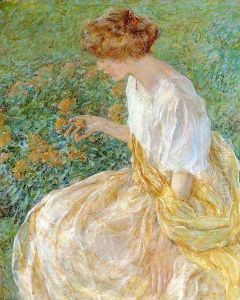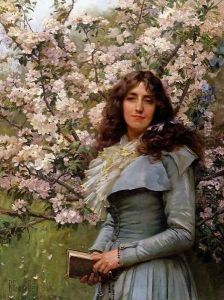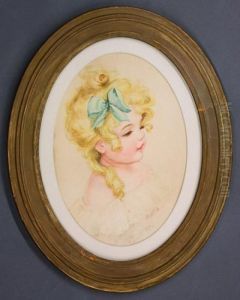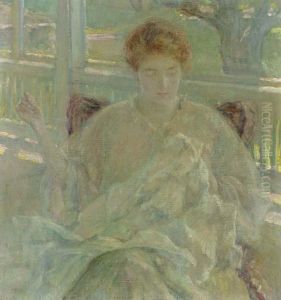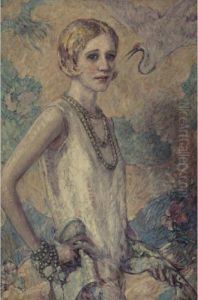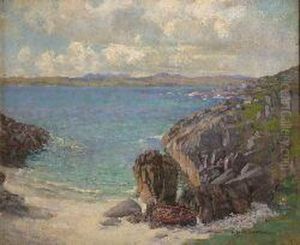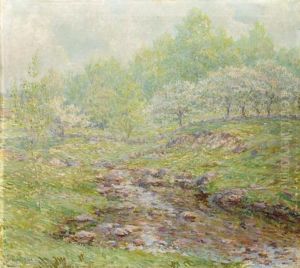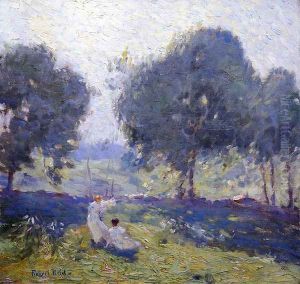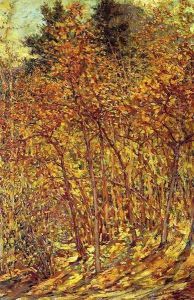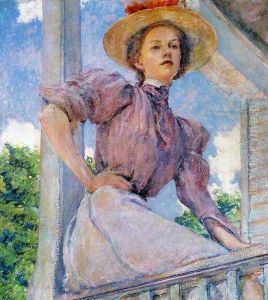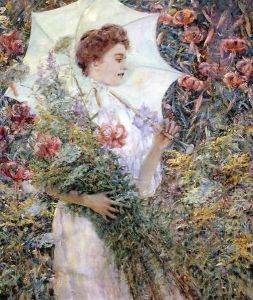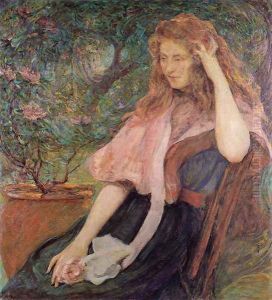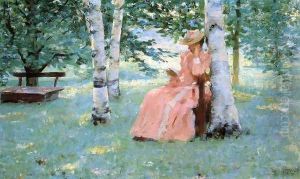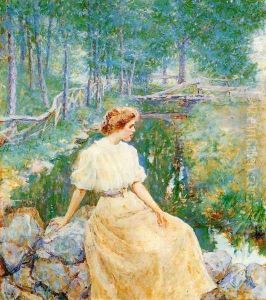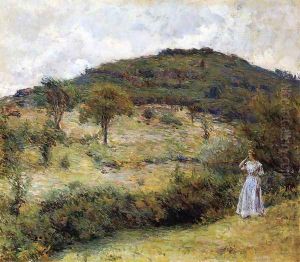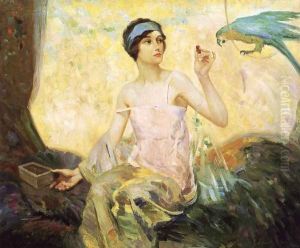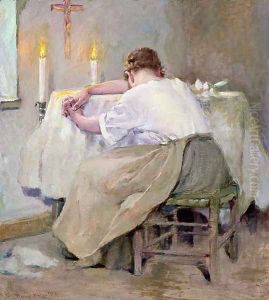Robert Reid Paintings
Robert Lewis Reid was an American Impressionist painter and muralist who played a significant role in the American art scene at the turn of the 20th century. Born on July 29, 1862, in Stockbridge, Massachusetts, Reid showed an early interest in the arts. He began his formal art education at the School of the Museum of Fine Arts in Boston and continued his studies at the Art Students League in New York. Eager to expand his artistic horizons, Reid traveled to Paris to attend the renowned Académie Julian, where he was influenced by the vibrant French Impressionist movement and the works of artists such as Claude Monet and Pierre-Auguste Renoir.
Reid's style is characterized by his use of light and color, capturing the fleeting moments of everyday life with a soft and luminous palette. Upon returning to the United States, Reid became a prominent member of the Ten American Painters, a group of artists who rebelled against the conservative practices of the American art establishments of the time. The group exhibited together, promoting Impressionist techniques and aesthetics, and Reid's work received significant attention and acclaim.
In addition to his Impressionist canvases, Reid was also well-known for his decorative murals. He completed several important commissions, including works for the Library of Congress and the Appellate Court House in New York City. His murals often featured allegorical and mythological themes, showcasing his ability to work on a grand scale while maintaining the delicate touch of Impressionism.
Throughout his career, Reid received numerous awards and honors, including medals at the Paris Exposition of 1900 and the Panama-Pacific International Exposition in San Francisco in 1915. His paintings are now part of several major museum collections, including the Metropolitan Museum of Art in New York and the Smithsonian American Art Museum in Washington, D.C.
Robert Reid's contributions to American Impressionism and his efforts to modernize the country's art scene have left a lasting legacy. He passed away on December 2, 1929, in Clifton Springs, New York, leaving behind a body of work that continues to be appreciated for its beauty and historical significance.











